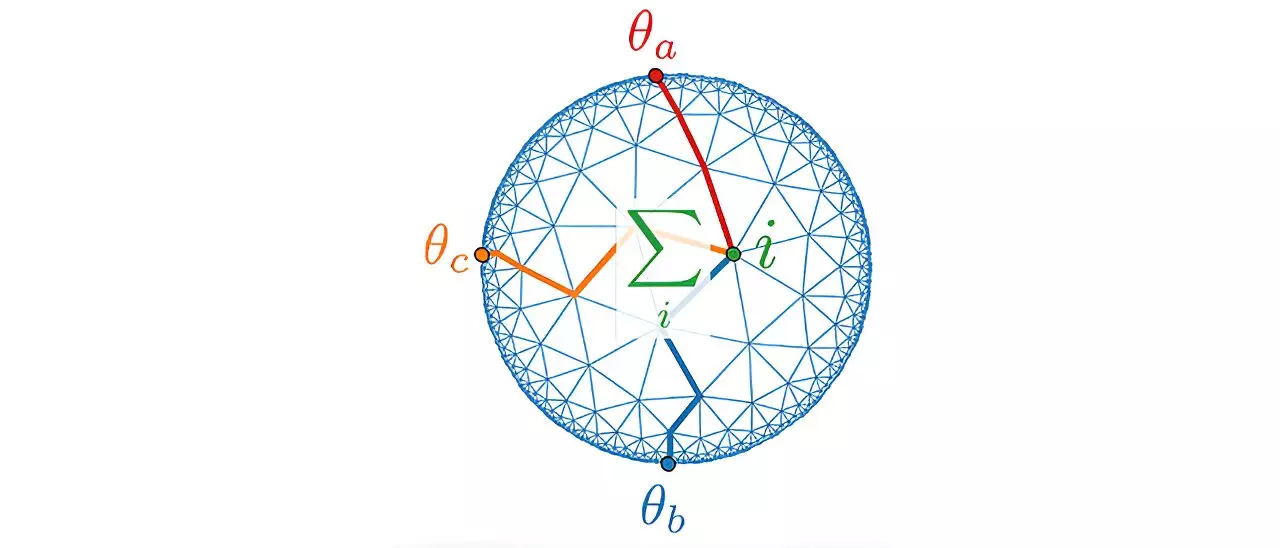Gravity, one of the four fundamental forces of nature, has long perplexed scientists and philosophers alike. While our grasp of gravity’s effects on macroscopic scales, such as planetary movements and tidal forces, has robust theoretical underpinning, we still grapple with its principles at the quantum level, where the rules of physics seem to obscure our comprehension. This limits our understanding of extreme phenomena like black holes and the origins of the universe. According to Professor Johanna Erdmenger from the University of Würzburg, the challenge lies in bridging classical gravitational theories with quantum mechanics.
The conceptual stumbling block arises from the stark contrast between the predictable nature of gravity in large-scale phenomena and the probabilistic nature inherent in quantum mechanics. As researchers venture deeper into the quantum realm, it’s increasingly important to develop theories that can satisfactorily explain gravitational interactions under conditions of extreme energy and density.
One of the pivotal theories to emerge in the context of quantum gravity is the Anti-de-Sitter/Conformal Field Theory (AdS/CFT) correspondence. This framework suggests a fascinating relationship between complex gravitational theories formulated in a higher-dimensional space and more manageable quantum theories that exist at the boundary of that space. Essentially, the statements made about a curved imaginary space—characterized by an inward geometric curvature—can be translated into simpler quantum dynamics.
The terms involved carry significant weight: “Anti-de-Sitter” refers to a specific kind of spacetime that behaves like a hyperbola, and “conformal field theory” encapsulates the behavior of quantum systems irrespective of spatial scales. Understanding this relationship not only invites access to deep gravitational insights but also provides a novel lens through which to study quantum phenomena. Erdmenger breaks down this complex theory by likening the AdS/CFT correspondence to a holographic image: while the information encoded on a two-dimensional surface can create a three-dimensional representation, the dynamics observed at the boundary can reflect those deep within the curved space.
Erdmenger and her team have recently taken impressive steps toward experimental validation of the AdS/CFT correspondence. With a clever ingenuity involving a branched electrical circuit, they aim to model the characteristics of curved spacetime. This experimental setup allows the researchers to observe how electrical signals behave at different branch points, simulating various gravitational dynamics across the imagined spacetime.
By connecting theoretical predictions with tangible experiments, the study published in *Physical Review Letters* represents a landmark achievement in gravitational research. It demonstrates that, under the right conditions, the signals at the edge of their analog of curved spacetime indeed mirror the more intricate dynamics occurring within it. This validation opens doors not only for theoretical physics but also for applied technology.
The implications of this research extend well beyond theoretical exploration. The methodologies devised might herald a new era in quantum technology, potentially leading to advancements in the transmission of electrical signals with minimal loss. As the simulated curvature of space stabilizes and directs these signals, the prospect for more efficient electronic communication systems becomes tantalizingly plausible.
In an era marked by rapid technological evolution, such innovations could have far-reaching repercussions across various fields. From advancements in computational systems to enhanced network communications, the benefits of understanding and mimicking gravitational principles at the quantum scale promise to reshape our technological landscape.
The journey to demystifying gravity stands at a crucial juncture, driven by the synergy between theoretical inquiry and experimental validation. The work undertaken by Professor Erdmenger and her team establishes a new foothold in this quest—a combination of deep physics insight and innovative technological application. As they move forward with their experiments, we may find that solutions to our most profound scientific dilemmas are often concealed within the simplicity of elegant theoretical models, waiting to be unveiled through technological innovation and persistent curiosity.


Leave a Reply